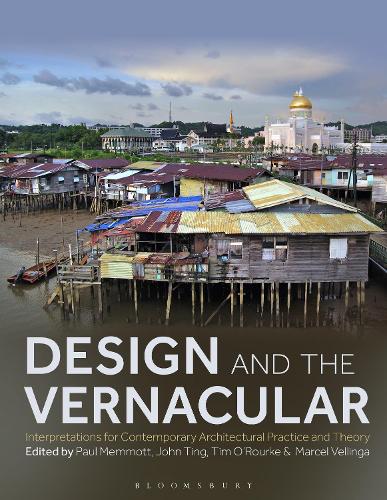
Design and the Vernacular: Interpretations for Contemporary Architectural Practice and Theory
(Paperback)
Available Formats
Publishing Details
Design and the Vernacular: Interpretations for Contemporary Architectural Practice and Theory
By (Author) Paul Memmott
Edited by John Ting
Edited by Tim ORourke
Edited by Professor Marcel Vellinga
Bloomsbury Publishing PLC
Bloomsbury Visual Arts
20th March 2025
United Kingdom
Classifications
Professional and Scholarly
Non Fiction
Anthropology
720.99
Physical Properties
Paperback
320
Width 190mm, Height 244mm, Spine 22mm
889g
Description
Design and the Vernacular explores the intersection between vernacular architecture, local cultures, and modernity and globalization, focussing on the vast and diverse global region of Australasia and Oceania. The relevance and role of vernacular architecture in contemporary urban planning and architectural design are examined in the context of rapid political, economic, technological, social and environmental changes, including globalization, exchanges of people, finance, material culture, and digital technologies. Sixteen chapters by architects designers and theorists, including Indigenous writers, explore key questions about the agency of vernacular architecture in shaping contemporary building and design practice. These questions include: How have Indigenous building traditions shaped modern building practices What can the study of vernacular architecture contribute to debates about sustainable development And how has vernacular architecture been used to argue for postcolonial modernisation and nation-building and what has been the effect on heritage and conservation Such questions provide valuable case studies and lessons for architecture in other global regions -- and challenge assumptions about vernacular architecture being anachronistic and static, instead demonstrating how it can shape contemporary architecture, nation building and cultural identities.
Reviews
This is a welcome, timely volume drawing attention to local architectural traditions. Often overlooked, these represent generations of experience of particular places. They feature ingenious, often sustainable, solutions to local conditions. They are versatile and adaptable, and importantly today, they offer many people the scope independently to manage with climate change, being within their control, depending on local knowledge, skills and available materials. * Paul Sillitoe, Durham University, UK *
Author Bio
Paul Memmott is a trans-disciplinary researcher (architect/anthropologist) and the Director of the Aboriginal Environments Research Centre (AERC) and the Indigenous Design Place (IDP) at the University of Queensland, Australia. John Ting is an architect, researcher and educator. He teaches in the architecture program at the University of Canberra, Australia. Tim ORourke is Health Safety and Wellness Chair and Senior Lecturer in Architecture at the University of Queensland, Australia. Marcel Vellinga is Professor of Anthropology of Architecture at Oxford Brookes University, UK.
